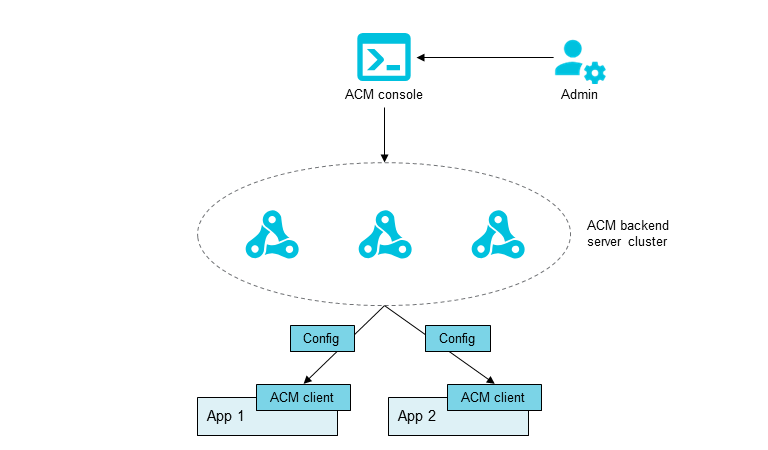Enterprise Distributed Application Service (EDAS) is integrated with Application Configuration Management. You can use Application Configuration Management to manage application configurations in the EDAS console.
Benefits of Application Configuration Management
If you want to modify application configurations in a traditional architecture, you must log on to the server and manually modify the configurations.

Application Configuration Management allows you to modify application configurations in the EDAS console. Configuration updates are automatically pushed to each server and immediately take effect.

For more information about Application Configuration Management, see What is ACM.
Features
Integrated with Application Configuration Management, EDAS allows you to manage configurations in the EDAS console. Choose a configuration management feature based on your business requirements.
| Feature | Description |
|---|---|
| Create a configuration | You can extract the variables and parameters from the code of an application and save them in a configuration file. This allows you to modify the configuration of the application by modifying only the configuration file. |
| Synchronize application configurations | You can synchronize the configuration of an application across multiple environments, such as the development and test environments. You can synchronize the configuration of an application across multiple regions. You can create multiple microservice namespaces, create a configuration in one of the microservice namespaces, and then synchronize the configuration to the other microservice namespaces. |
| Manage configurations | After you create a configuration, you can search for, view, modify, or delete it in the EDAS console. |
| Query and roll back to earlier versions | If a configuration contains errors, you can query previous versions of the configuration and roll back the configuration to a specified version. |
| Configuration monitoring | After you modify a configuration, you can check whether the updates are published to the instances that monitor the configuration. |
| Query configuration push tracks | After you modify a configuration, you can track whether the configuration updates are pushed. If the configuration updates do not take effect on an instance, you can view the tracking data to check whether the configuration updates are pushed. |